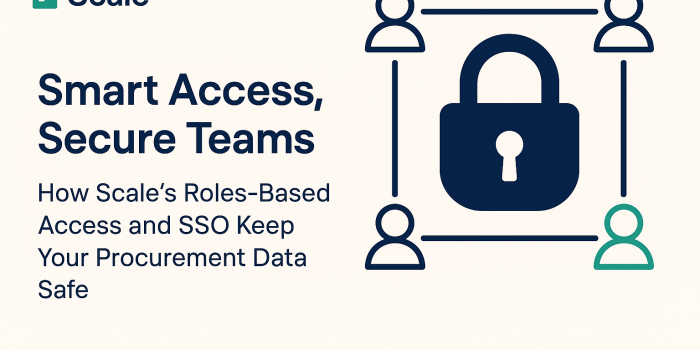What is “Direct Procurement Method” in Kenya?
Usually the least preferred method as it sets aside the rules that ensure there’s competition among the suppliers. Only used under exceptional circumstances.

The Public Procurement and Assets Disposal (PPAD) Act defines direct procurement method as a method of procurement where a procuring entity procures its requirement from one bidder or supplier without having received bids from other bidders. Basically, goods, works and services are acquired from a supplier without subjecting them to any form of competition.
This method is usually the least preferred as it sets aside the rules for ensuring competition among the suppliers and should, therefore, be used only under exceptional circumstances. In-order to limit any attempts of abuse, the Law provides for a set of strict pre-conditions that must exist before a procuring entity adopts the use of this procurement method.
Here’s what the Procurement Laws say about Direct Procurement
The use of the Direct Procurement method is governed by Sections 103-104 of the Public Procurement and Asset Disposal Act Revised Edition 2016 as outlined below:
- A procuring entity may use direct procurement as allowed below as long as the purpose is not to avoid competition.
- A procuring entity may use direct procurement if any of the following are satisfied:
- Goods, works or services that are available only from a particular supplier or contractor, or a particular supplier or contractor has exclusive rights in respect of the goods, works or services, and no reasonable alternative or substitute exists.
- Due to war, invasion, disorder, natural disaster or there is an urgent need for the goods, works or services, and engaging in tendering proceedings or any other method of procurement would therefore be impractical, provided that the circumstances giving rise to the urgency were neither foreseeable by the procuring entity nor the result of dilatory conduct on its part.
- Owing to a catastrophic event, there is an urgent need for the goods, works or services, making it impractical to use other methods of procurement because of the time involved in using those methods.
- The procuring entity, having procured goods, equipment, technology or services from a supplier or contractor, determines that additional supplies shall be procured from that supplier or contractor for reasons of standardization and compatibility with existing goods, equipment, technology or services, taking into account the effectiveness of the original procurement in meeting the needs of the procuring entity, the limited size of the proposed procurement in relation to the original procurement, the reasonableness of the price and the unsuitability of alternatives to the goods or services in question.
- For the acquiring of goods, works or services provided by a public entity provided that the acquisition price is fair and reasonable and compares well with known prices of goods, works or services in the circumstances..
- A public officer who contravenes the provisions of subsection (2) commits an offence.
Further, a procuring entity that conducts procurement using the Direct Procurement tendering method shall be subject to the following procedure:
In addition to direct procurement requirements set out under section 103 of the Act, the following shall apply:
- procuring entity shall conduct procurement using the direct procurement method subject to threshold matrix set out in the Second Schedule;
- where an accounting officer uses direct procurement, the procuring entity shall record the reasons upon which it makes a determination that the relevant condition set out in section 103 of the Act has been satisfied;
- an accounting officer shall, within fourteen days after the notification of the award of the contract, report any direct procurement of a value exceeding five hundred thousand shillings to the Authority in a format provided by the Authority.
- an accounting officer shall not enter into a contract under section 104 of the Act unless it is satisfied that the offer—
- meets the requirements of the procuring entity as specified under paragraph (1)(b) above; and
- is at the prevailing real market price.
- a procuring entity shall negotiate with a person for the supply of the goods, works or services being procured in accordance with the provisions of the Act and these Regulations; and
- a procuring entity shall not use direct procurement in a discriminatory manner;.
- Any direct procurement bid shall be evaluated in accordance with the provisions of the Act and these Regulations.
- The negotiations shall be conducted by the ad hoc evaluation committee appointed in accordance with section 104 (b) of the Act.
- The ad hoc evaluation committee responsible for negotiation under paragraph (3) may negotiate on terms that include
- Price;
- terms of contract;
- terms of delivery;
- scope of work or service,.
- On completion of negotiations, the committee under paragraph (3) shall prepare a report and submit it to the head of procurement function for professional opinion and for onward submission to the accounting officer for approval and award of the contract.
- Any direct procurement shall require the prior approval of the accounting officer in writing except under urgent need where approval shall be granted in line with section 69 (3) of the Act.
- For greater certainty, the fourteen days window period between the notification of award and signing of the contract provided for under section 135(3) of the Act shall not apply for direct procurement method.
- The resulting contract shall be in writing and signed by both parties as provided for under section 104(d) of the Act.
The Maximum Level of Expenditure for the use of Direct Procurement
Guided by the Second Schedule of the Public Procurement and Assets Disposal Regulations (2020), where the procurement method is a Direct Procurement, the threshold matrix is provided as follows:
| Procurement Method – Direct Procurement under section 103(2) and (3) of the Act | ||
| Goods | Works | Services |
| No maximum expenditure under this method provided the conditions under this section are met | No maximum expenditure under this method provided the conditions under this section are met | No maximum expenditure under this method provided the conditions under this section are met |
| No minimum | No minimum | No minimum |
Get your business into the system
The very nature of this procurement method already indicates that none of the tender opportunities will be advertised or posted through the normal available channels for anyone who might be interested to apply.
At Scale, we encourage you to always be on the lookout for and submit applications for opportunities to get pre-qualified by as many procurement entities as possible. Doing this ensures your business’ experience and capabilities are within the public entity’s system when opportunities for restricted tendering and/or direct procurement arise.
What else can you do for your business to get a chance to be shortlisted for direct procurement opportunities? Tell us your thoughts in the comment section below…








